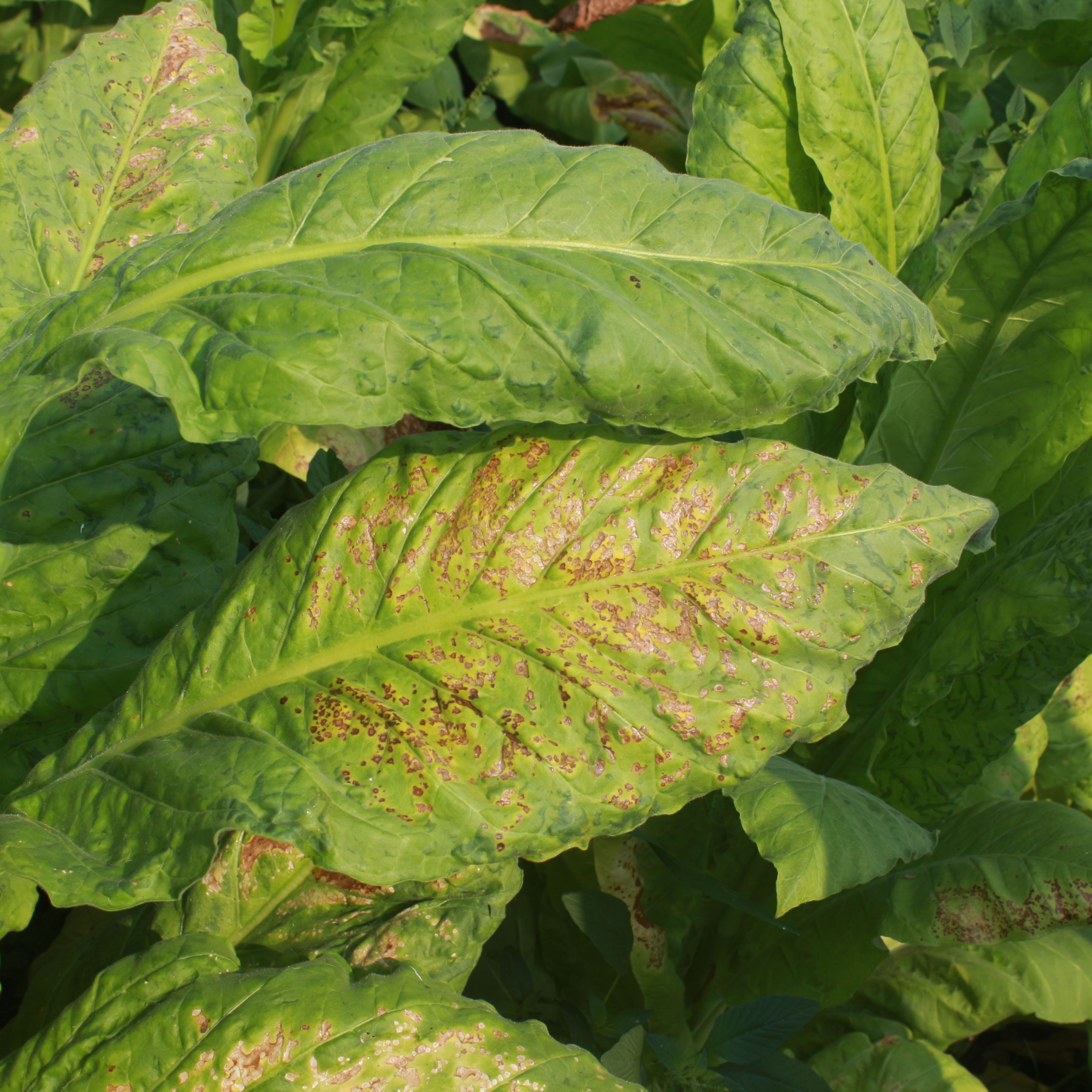
What is the tobacco mosaic virus?
Tobacco mosaic virus, also called TMV for short , is a virus of the Tobamovirus group. It is a virus that originally occurred in large numbers in tobacco plants, but over time also infected more and more ornamental plants and vegetable plants such as tomatoes and peppers. Other affected plants can be beans, lettuce, courgettes, cucumbers, fruit trees and melons. The virus is very stable and therefore only difficult to control. Because it leads to a slowing down of the growth of the plant, there are enormous crop losses.
The TMV was first detected, isolated and crystallised in 1935. A team led by John Desmond Bernal found liquid crystalline states in its aqueous solutions in which viruses were rod-shaped largely parallel.
What are the properties of the tobacco mosaic virus?
The TMV is a tubular virus about 18 nm thick and 300 nm long, which consists of single-stranded ribonucleic acid of about 6,400 bases and of about 2,100 identical coat proteins. The virus infects exclusively plants. The tobacco mosaic virus achieved high significance in history because it was the first time that it transmitted a disease without any bacterial involvement. Due to its properties, it is hardly surprising that it is one of the most widespread viruses ever and not coincidentally the first virus ever described.
What are the symptoms of tobacco mosaic virus?
The incubation period for TMV is about 3 weeks. Light green colouring develops between the leaf veins . First on the younger leaves and later in the course of the disease also on the older leaves. Afterwards a pattern of dark and light spots usually develops on the leaves. This mosaic pattern is how the virus got its name. In the later stage, the leaves may become wrinkled, crumpled and finally curl up. This is especially noticeable in older leaves. In addition, there is very irregular growth. Since less and less photosynthesis can take place , there is considerable growth inhibition of the entire plant.
How is the tobacco mosaic virus transmitted?
The virus is easily transmitted through contact with plant juices as well as contaminated seeds. The TMV then multiplies in the cell plasma of the host cell . This is also where the highest concentration of the virus is found. This is also where the highest concentration of the virus is found. Due to these easy transmission routes, it is spread all over the world. The TMV is extremely resistant to chemical pesticides and very heat-resistant. For these reasons, it is very difficult to combat the virus directly.
How can the tobacco mosaic virus be controlled?
The TMV is extremely persistent and also highly contagious. In a greenhouse, it usually spreads during cultivation via the plant juices. However, it can also spread through the soil, the substrate or the drainage water. Insects, on the other hand, cannot transmit the virus at all.
If a plant becomes infected, the TMV cannot be controlled. The symptoms can decrease or disappear completely, but reappear the following year. This is also the reason why the Tobacco Mosaic Virus is so difficult to control in plant cultivation.
However, the following measures can be taken to limit its spread to a large extent:
- Irrigation and drainage water should be disinfected so that it is and remains free of harmful organisms.
- It should be ensured that all staff always wash and disinfect their hands thoroughly before entering the greenhouse . Staff should also wear clean clothing at all times.
- Scissors, knives or other garden cutting tools should be dipped in a Menno Florades solution. This will remove any contaminated plant juices.
- Infected plants should be removed immediately . Incidentally, this applies to all plants on the same mat and also to plants along the path in the direction of work. Here the risk is very high that these plants are also already infected. The contaminated plants should be disposed of in a tightly sealed plastic bag. Afterwards, it is essential to wash and disinfect your hands thoroughly.
The most important moment for TMV control is the crop change. It should always be ensured that all plant debris is removed from the greenhouse, because the tobacco mosaic virus can survive for several months in the plant material . The entire greenhouse should then be cleaned and disinfected. This is the only way to kill the pathogens and prevent transmission to new plants .
How can the tobacco mosaic virus be prevented?
By the mentioned hygiene measures that should be followed in a farm , the risk of TMV entering the greenhouse can be minimised. It is essential that adequate hand disinfection is maintained at all times. A clear hygiene protocol should be posted for visitors, also alerting them to hand disinfection.
TMV occurs in many cases on the tobacco plant. Because the virus is so stable, it has the property of surviving for a long time in tobacco products. Via these tobacco products, the TMV can get into the hands of smoking employees . It is therefore essential that employees who smoke in particular comply with the hygiene measures of hand disinfection before entering the greenhouse. Smoking should be avoided in the greenhouse itself .
What can the tobacco mosaic virus be used for?
Due to its properties, the TMV is currently being used in research work as a tool for new electrical components in nanotechnology for the development and design of a field-effect transistor. Through a biomineralisation procedure, a semiconductor layer is formed on the tobacco mosaic virus.
